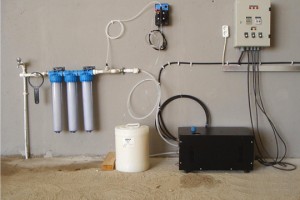2The smell is a warning to the brain that stimulates some of the molecules in the reactive structure that are gaseous by breathing through the nose.
Odor Control is odor neutralization of unwanted bad smells and uses components the following methods depending on the source of the odor.
Neutralization: The active ingredient of Odor Control deodorant products primarily targets the odor molecule itself. The unique molecular structure of our odor neutralizing chemical locks into the undesired odor molecule and destroys the perception of bad odor by the perceptors in the nose. The malodor initiates the process of disintegration of the molecule.
Precipitation: Odor Control incorporates misty odor molecules created especially when applied by fogging automation and precipitates slowly with fog. In a sense, this effect can be summarized as a post-rain effect similar to airborne Odor Control and water mixture.
As a result of all or part of these methods, the odor of the environment is neutralized and falls below the level of perceivable disturbance for humans.
Application Method
 Odor Control deodorant chemistry can be used in combination with perfume dosing pumps and all other automatic spray guns in the market in automated applications.
Odor Control deodorant chemistry can be used in combination with perfume dosing pumps and all other automatic spray guns in the market in automated applications.
Application Results
Direct or indirect application of solid odor sources: Odor control (3-mercapt, 3-methyl butanol) was used to study Odor Control’s effect on solid odor sources by liquid spraying method. Odor Control was sprayed homogeneously directly onto the odor source.
The results obtained according to the responses of the subjects in the study conducted by the standard sampling method are as shown in graphic 1. In this study, it is seen that a small dose is squeezed and then completely destroyed the smell over time by working in the environment where Odor Control is applied.
When we spray a similar but different work in moist hotel rooms, it is possible to apply Odor Control’s 5% solution at most once in a single dose in the face of a constantly coming smell from moisture source.
The odor cannot be felt again for 24-48 hours in this application which is done once a day to the room against the odor smell of constantly coming from an indeterminate source in the hotel rooms.
Activity on gaseous amines: In a study to investigate the effectiveness of Odor Control on volatile amines, a certain amount of cyclohexylamine was expected to be sprayed into a closed drum to evaporate. Thus, a certain amount of Odor Control was sprayed on the homogeneous cyclohexylamine containing medium. The time dependent change of the cyclohexylamine concentration in the control barrel with the barrel applied with Odor Control can be seen.
Activity on hydrogen sulfur (H2S) gas: In the study on H2S gas, which is the main cause of odor problems in wastewater treatment plants, anaerobic decay of activated sludge left in a closed tank was promoted. Then 0.1% water based Odor Control solution was sprayed with aeration.
At the beginning of the application, the H2S concentration, which was at the level of 700 ppm, was reduced to 200 ppm by the Odor Control application, as shown by the H2S concentration measurements in the gas samples taken from the tank at regular intervals. After the application was stopped and after the application of anaerobic decay, the rising H2S concentration clearly demonstrated the effectiveness of Odor Control.
